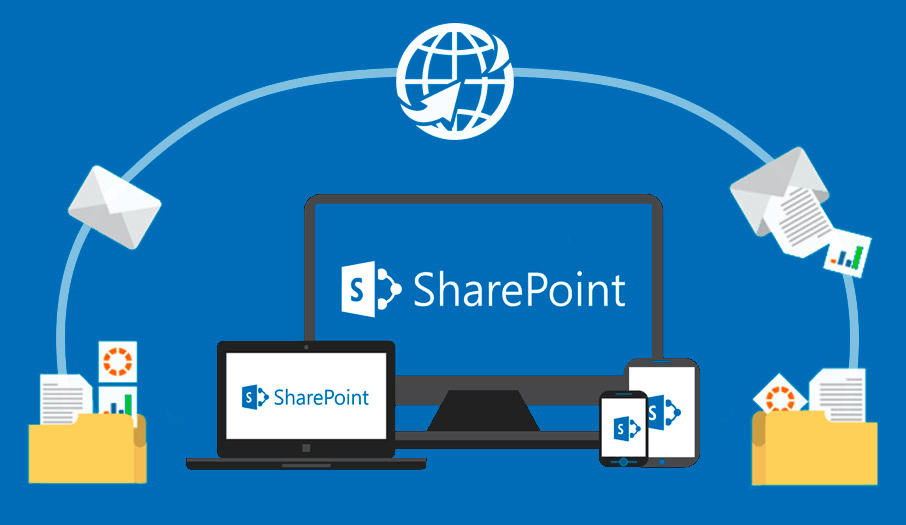With a good understanding of how SharePoint stores its listsm, managing and accessing lists in SharePoint can be more efficient than you expected. This guide will cover everything you need to know about SharePoint list storage, including how to access, manage, and organize your lists for the optimal performance.
About SharePoint List Storage Locations
In SharePoint, lists are stored within content databases associated with site collections. Each list's data is housed in tables within these databases, enabling quick access and retrieval. The architecture ensures that list data is seamlessly integrated with other SharePoint features, allowing for comprehensive data management and collaboration.
The Role of Content Databases in Storing SharePoint Lists
Content databases play a crucial role in SharePoint's list storage. Each site collection is linked to a specific content database, where all its lists, libraries, and site configurations are stored. The content database ensures that data is stored securely and can be efficiently retrieved when needed.
Differences Between Site Collections and Sites for List Storage
Site collections and sites are fundamental to understanding where lists are stored in SharePoint. A site collection is a group of websites under a common top-level site, each capable of containing its own lists. Lists in SharePoint are stored at the site level, within a site collection. This hierarchical structure allows for better organization and management of lists across different sites and collections.
How to Access Lists in SharePoint
Accessing lists in SharePoint can be done through the site's main interface. Users can navigate to specific sites within a site collection and find lists via the site contents page. The site contents page provides a comprehensive view of all lists and libraries available within a site, making it easy to locate and access the required lists. Here’s a step-by-step guide to help you navigate through the SharePoint interface and find your lists easily.
-
Log in to Your SharePoint Site:
- Open your web browser and navigate to the URL of your SharePoint site.
- Enter your credentials (username and password) to log in.
-
Navigate to the Home Page:
- Once logged in, you will be directed to the home page of your SharePoint site.
- The home page typically contains various links and navigation menus to different parts of the site.
-
Access the Site Contents Page:
- On the home page, look for the “Settings” gear icon usually located at the top right corner of the page.
- Click on the “Settings” icon and select “Site contents” from the dropdown menu. This will take you to the Site Contents page.
-
Locate Your Lists:
- The Site Contents page provides a comprehensive view of all the lists and libraries available within the site.
- Scroll through the page to find the list you want to access. Lists are typically listed under the "Lists, Libraries, and other Apps" section.
-
Open the Desired List:
- Once you locate the desired list, click on its name to open it.
- This will take you to the main interface of the list, where you can view and manage list items.
-
Using the Quick Launch Menu (Optional):
- On some SharePoint sites, you can also use the Quick Launch menu on the left side of the page to access lists.
- The Quick Launch menu often includes shortcuts to frequently accessed lists and libraries. Clicking on any list name here will open that list directly.
-
Search for Lists (Optional):
- If you have trouble finding a list, you can use the search bar at the top of the page.
- Type the name of the list you are looking for and press “Enter.” The search results will display items matching your query, including lists.
By following these steps, you can easily navigate through SharePoint to access the lists you need. This process ensures you can manage and utilize your lists efficiently within the SharePoint environment.
How to Manage SharePoint Lists Better?
Effective management of lists is crucial for maintaining optimal performance in SharePoint. This includes structuring lists with appropriate columns and metadata, using folders for better data segmentation, and avoiding excessively large lists that can slow down performance. Regularly reviewing and archiving old or unused list items can also help maintain performance.
Keep an Eye on Storage Limits and Quotas for SharePoint Lists
SharePoint administrators need to manage storage limits and quotas to prevent performance issues. Each content database can have a specified storage limit, and site collections within the database must adhere to this limit. Setting appropriate quotas helps ensure that no single site collection consumes excessive storage, which can affect the performance of other site collections sharing the same database.
Set Permissions and Access Controls for Lists
Permissions and access controls are vital for managing SharePoint lists securely. Administrators can set different permission levels for users and groups, ensuring that only authorized individuals can access or modify lists. Utilizing SharePoint's robust permission settings helps protect sensitive information and maintains data integrity.
Regularly Maintain and Clean up of SharePoint Lists
Regular maintenance and cleanup are essential for keeping SharePoint lists organized and efficient. This involves periodically reviewing lists to remove outdated or irrelevant items, archiving old data, and ensuring that list structures remain logical and useful. Regular cleanup helps prevent clutter and improves overall site performance.
Categorize and Tag Lists for Better Organization
Categorizing and tagging lists can significantly improve their organization and usability. By assigning categories and tags to lists, users can quickly find related lists and understand their context within the broader SharePoint environment. This method enhances the ability to manage and navigate large numbers of lists.
Utilize Views and Filters to Enhance List Usability
Views and filters are powerful tools for enhancing the usability of SharePoint lists. Custom views can display list items based on specific criteria, making it easier for users to find relevant information. Filters can narrow down list items based on selected attributes, allowing users to focus on the data that matters most to them. Using views and filters effectively can greatly improve the user experience and efficiency in managing SharePoint lists.
Further Reading: Move Lists Between Different SharePoint Sites
If someday you need to transfer list from one SharePoint account to another, or one SharePoint site to another site under the same account, you can download and re-upload, or simply turn to some third-party tool to directly transfer lists online without using the local storage as a transit. If you like, going for MultCloud is an excellent choice. It aims to help users to effortlessly transfer, back up or sync data across different clouds without the complex process of manually downloading and re-uploading.

- Cloud Transfer: Move one cloud data to another without download and re-upload.
- Cloud Sync: Sync data across clouds seamlessly in real time.
- Cloud Backup: Dynamically backup and restore files between clouds.
- Automatic: Set up a schedule to make task automatically run as preferred.
- Offline: Transfer, sync or backup cloud data online without going through local.
- Efficient: Access and manage all your clouds with a single login.
MultCloud Supports Clouds
-
Google Drive
-
Google Workspace
-
OneDrive
-
OneDrive for Business
-
SharePoint
-
Dropbox
-
Dropbox Business
-
MEGA
-
Google Photos
-
iCloud Photos
-
FTP
-
box
-
box for Business
-
pCloud
-
Baidu
-
Flickr
-
HiDrive
-
Yandex
-
NAS
-
WebDAV
-
MediaFire
-
iCloud Drive
-
WEB.DE
-
Evernote
-
Amazon S3
-
Wasabi
-
ownCloud
-
MySQL
-
Egnyte
-
Putio
-
ADrive
-
SugarSync
-
Backblaze
-
CloudMe
-
MyDrive
-
Cubby

